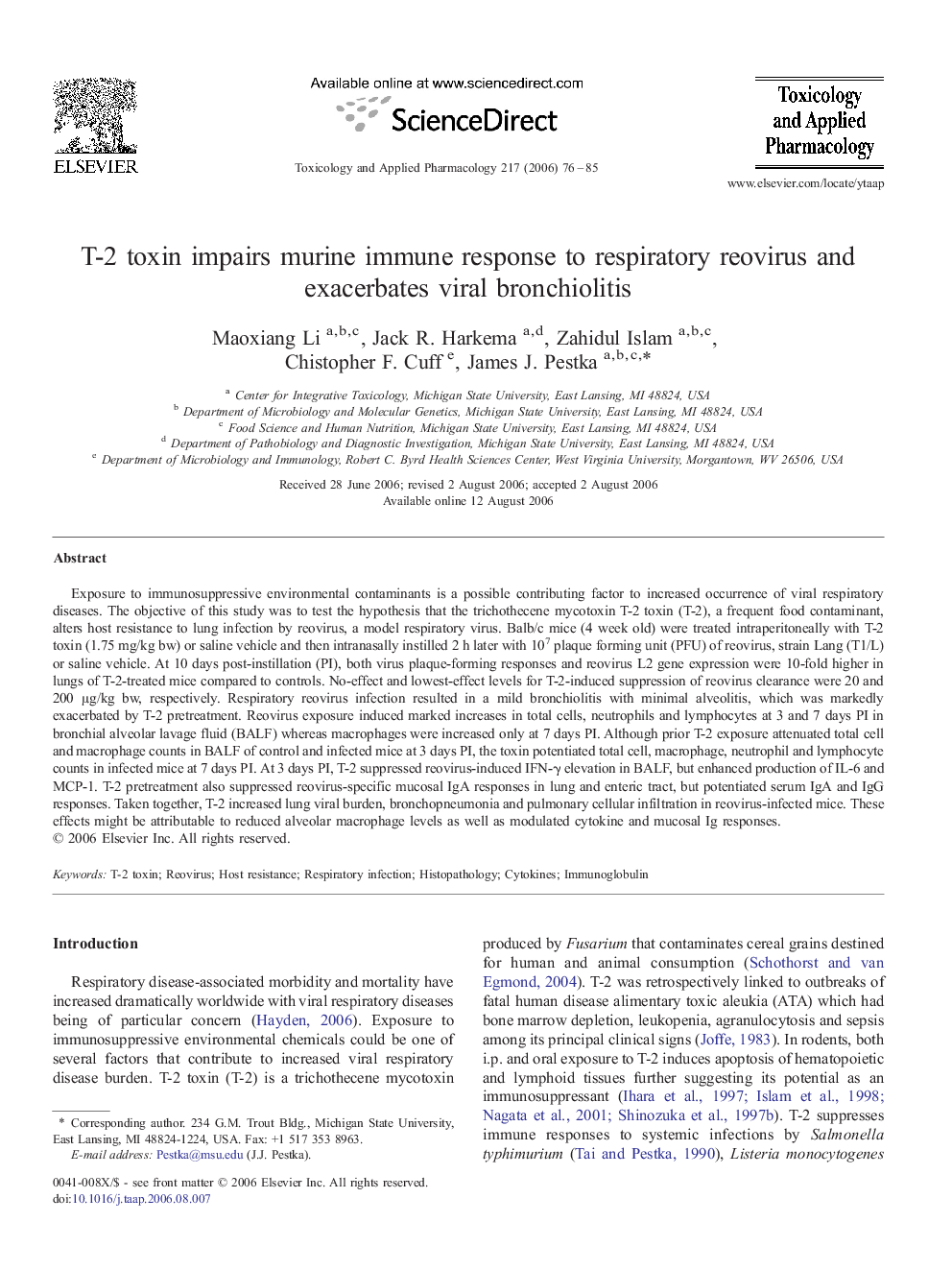| Article ID | Journal | Published Year | Pages | File Type |
|---|---|---|---|---|
| 2571951 | Toxicology and Applied Pharmacology | 2006 | 10 Pages |
Exposure to immunosuppressive environmental contaminants is a possible contributing factor to increased occurrence of viral respiratory diseases. The objective of this study was to test the hypothesis that the trichothecene mycotoxin T-2 toxin (T-2), a frequent food contaminant, alters host resistance to lung infection by reovirus, a model respiratory virus. Balb/c mice (4 week old) were treated intraperitoneally with T-2 toxin (1.75 mg/kg bw) or saline vehicle and then intranasally instilled 2 h later with 107 plaque forming unit (PFU) of reovirus, strain Lang (T1/L) or saline vehicle. At 10 days post-instillation (PI), both virus plaque-forming responses and reovirus L2 gene expression were 10-fold higher in lungs of T-2-treated mice compared to controls. No-effect and lowest-effect levels for T-2-induced suppression of reovirus clearance were 20 and 200 μg/kg bw, respectively. Respiratory reovirus infection resulted in a mild bronchiolitis with minimal alveolitis, which was markedly exacerbated by T-2 pretreatment. Reovirus exposure induced marked increases in total cells, neutrophils and lymphocytes at 3 and 7 days PI in bronchial alveolar lavage fluid (BALF) whereas macrophages were increased only at 7 days PI. Although prior T-2 exposure attenuated total cell and macrophage counts in BALF of control and infected mice at 3 days PI, the toxin potentiated total cell, macrophage, neutrophil and lymphocyte counts in infected mice at 7 days PI. At 3 days PI, T-2 suppressed reovirus-induced IFN-γ elevation in BALF, but enhanced production of IL-6 and MCP-1. T-2 pretreatment also suppressed reovirus-specific mucosal IgA responses in lung and enteric tract, but potentiated serum IgA and IgG responses. Taken together, T-2 increased lung viral burden, bronchopneumonia and pulmonary cellular infiltration in reovirus-infected mice. These effects might be attributable to reduced alveolar macrophage levels as well as modulated cytokine and mucosal Ig responses.
